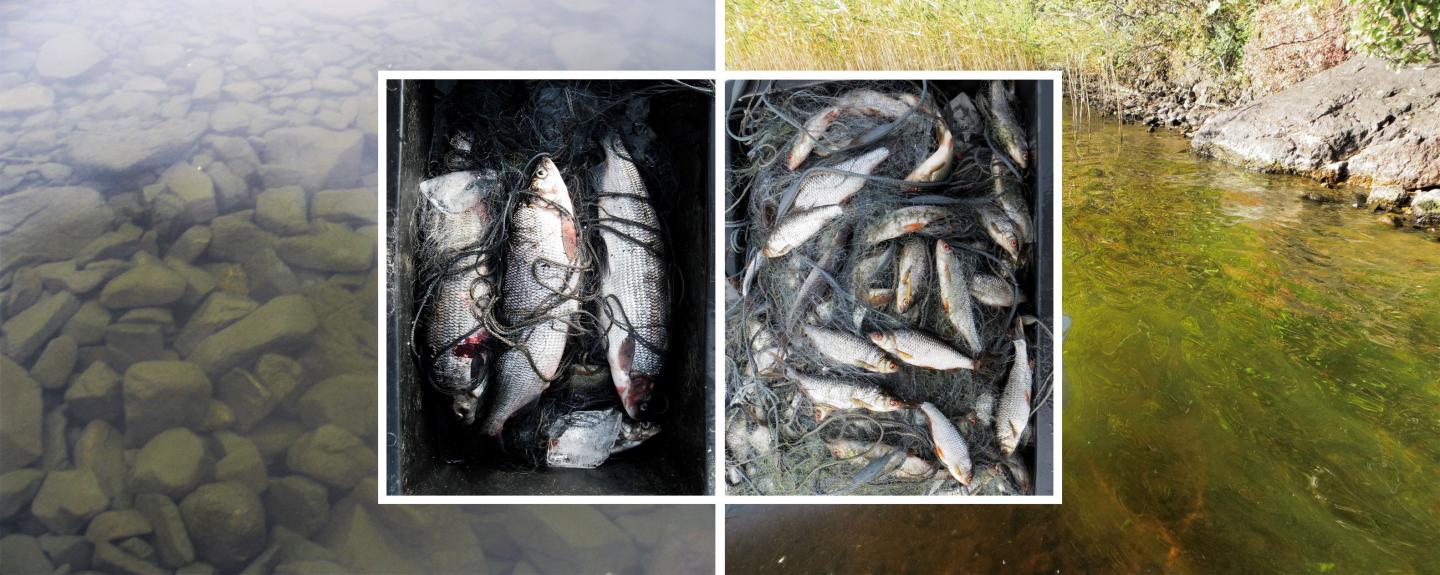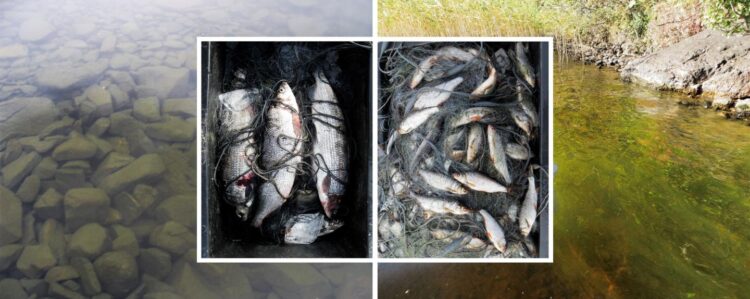
Credit: Kimmo Kahilainen & Brian Hayden
Subarctic regions are facing rapid changes in climate and land-use intensity. An international research team recently completed an investigation to see how these changes are affecting the food webs and fish communities of lakes in northern Finland. Biomasses and omega-3 fatty acids, EPA and DHA, were determined from the algal producers at the base of food web to large carnivorous fish from 20 lakes along a pronounced climatic and productivity gradient. Increasing nutrient load and rising temperature shift food webs towards murky water adapted communities.
The team measured amount of fish and invertebrates from 20 subarctic lakes along climate and productivity gradient and determined the nutritional quality of organisms in each lake by measuring valuable omega-3 fatty acids, EPA and DHA, from primary producer algae communities to top predators.
Researchers found major differences in the clear and murky water communities. Increasing temperature and productivity increased biomass of algal and cyprinid fish communities.
Professor Kimmo Kahilainen from University of Helsinki, Lammi Biological Station, coordinated this lake research program.
“What we find in these food webs was community shift from clear water to murky lakes. We get a lot of fish from blue-green algal covered lakes, but there were no salmonid fishes anymore and the fish catch consisted almost exclusively of roach” says Kahilainen.
Changes in fatty acid producing algal communities
Biomass in lake food webs is largely composed of water, carbohydrates, proteins and lipids. Part of lipids are nutritionally very important including essential omega-3 fatty acids, such as EPA and DHA, which are efficiently produced by certain algae, such as diatoms in subarctic regions.
Invertebrates consume these algal basal producers and their EPA and DHA are transferred through the food web.
Researchers measured EPA and DHA content from whole food web from algae to carnivorous fish in each lake.
“Algal community changed from diatoms to blue-green algae and their quality decreased from clear to murky lakes, similar decreasing quality was also observed in invertebrates”, says the lead author of study Mr Ossi Keva, a PhD student from University of Jyväskylä.
Despite decreasing prey item quality, the hypothesised cascading effects on fish was not observed. Instead, increasing fish biomass in murky lakes actually led to an increase in total fatty acids.
“Food webs in warmer and more productive environment do contain more fish and fatty acids, while the fish species itself shift from highly valued salmonids towards cyprinid dominated communities. Northern Finnish pristine subarctic lakes are not getting clearer in future, the change is more likely towards warmer and murky lakes modifying food web communities as well”, Keva summarises.
###
Researchers from Finland, Canada and Switzerland collaborated to the subarctic lake food web study.
The research was published in Global Change Biology on 30th of October 2020.
Link to research:
https:/
Further information:
Ossi Keva, University of Jyväskylä, [email protected], tel. +358 400 618 944
Figure credit:
Kimmo Kahilainen & Brian Hayden
Figure legend:
In northern lakes algal and fish biomass are increasing with temperature and productivity. At the same time, fish communities are changing from whitefish towards roach dominance.
Media Contact
Ossi Keva
[email protected]
Original Source
https:/
Related Journal Article
http://dx.





